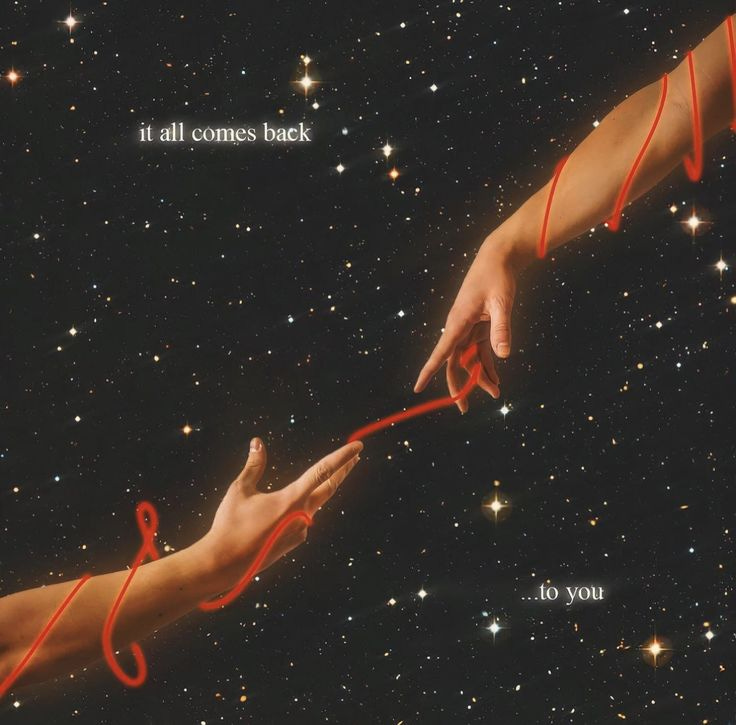"Love does not consist in gazing at each other, but in looking outward together in the same direction." – Antoine de Saint-Exupéry
Rethinking Love: The Many Faces of Connection
Love. A word so simple, yet so heavy with meaning, carrying the weight of centuries of longing, devotion, and human connection. Like a river carving its way through time, love flows through the stories we tell, shaping the landscapes of our hearts and binding us in ways both seen and unseen. It weaves its way into every corner of our lives—through the songs we sing, the stories we tell, and the dreams we dare to chase. For centuries, philosophers, poets, and storytellers have tried to define it, to pin down its fleeting nature and capture its essence. Yet, love remains elusive, constantly evolving and taking on new forms.
In its purest form, love is connection. It’s the thread that ties us to each other, sometimes delicately, sometimes with unbreakable strength. It’s not limited to grand romantic gestures or picture-perfect moments; love is found in everyday acts of kindness, in the quiet comfort of friendship, and in the complicated but essential process of learning to love oneself. Despite its many manifestations, popular culture tends to favor one narrative: romantic love as the pinnacle of human connection. But love is far too expansive to fit into a single box.
To truly understand love, we must step beyond its conventional depictions and embrace its intricate, ever-shifting landscape. Love is a mosaic of emotions, actions, and commitments—sometimes chaotic, sometimes serene, but always deeply human. Love is woven into the fabric of our lives in ways we often overlook. It exists in the way a parent tucks their child in at night, in the support of a friend who listens without judgment, and in the unspoken bonds that connect us to those we cherish most. Love is not just about emotion; it is about action, commitment, and the way we choose to show up for one another. Love is also about endurance—staying present even when challenges arise and choosing to nurture relationships through time and effort.
The Myth of the Soulmate
Few ideas are as pervasive and alluring as the concept of the soulmate. It promises us that somewhere out there, a perfect person is waiting to complete us—a single soul destined to intertwine with ours. This myth traces back to ancient times, with Greek mythology describing humans as once being whole, split apart by the gods, forever searching for their missing half. According to Plato’s "Symposium," humans originally had four arms, four legs, and a single head with two faces. These beings were so powerful that they threatened the gods, leading Zeus to split them in half, condemning them to spend their lives searching for their other half in an eternal quest for wholeness.
Similarly, in East Asian traditions, the idea of the "red string of fate" suggests that two people are bound together by an invisible thread, destined to find each other regardless of time, distance, or circumstance. This belief, originating in Chinese and Japanese folklore, describes the red string as being tied around the pinky fingers (or ankles, in some versions) of two individuals who are meant to be together. The string may stretch, tangle, or become knotted, but it will never break, symbolizing the enduring nature of true connection. Unlike the Greek myth, which focuses on the idea of a lost half, the red string of fate emphasizes a preordained bond that time and obstacles cannot sever.
In modern culture, the soulmate narrative is everywhere: in movies, music, and countless love stories that reinforce the idea that love should be effortless. If you meet “the one,” everything will fall into place. You’ll be understood without having to explain yourself, your flaws will be accepted without question, and happiness will naturally follow.
But this narrative is not without its dangers. It frames love as a passive, almost magical experience—something that happens to us rather than something we actively create. When relationships inevitably encounter challenges, the soulmate myth gives us an excuse to walk away, whispering that if love were real, it wouldn’t be this hard.
The red string of fate, while romantic, can also contribute to this misconception. The belief that two people are cosmically bound might suggest that love is predestined and effortless. However, even those "connected by fate" must put in the effort to nurture their relationship. Destiny may bring two people together, but it is commitment, understanding, and perseverance that keep them bonded.
True love, however, isn’t about perfection. It’s about growth. It’s about choosing someone—again and again—despite their flaws, learning to navigate the rough patches together, and understanding that no person can ever fully complete you. The idea of a perfect fit may be comforting, but real love is far more rewarding in its imperfections. Real love is built through resilience, through laughter in times of joy and solace in moments of pain, through shared struggles and small victories that create a bond stronger than any story of destiny.
To dispel the soulmate myth, we must recognize that love is an ongoing process rather than a fated event. Love requires effort, patience, and the willingness to grow alongside another person. Instead of waiting for an idealized partner to appear, we should focus on fostering relationships based on mutual respect, understanding, and shared experiences. The most enduring love stories are not those that begin with a perfect match, but those that are written through years of commitment, learning, and compromise. Love is not about finding someone who perfectly fits our expectations but about creating a life together through mutual understanding and dedication—whether bound by fate or not.
My Love
Love, for me, is not a grand, sweeping gesture filled with extravagant gifts or poetic declarations. Instead, it is found in the quiet, everyday moments and the simple acts that weave themselves into the fabric of daily life. Love is not about the spectacle; it is about consistency, about being present in ways that truly matter. My love language is words and affection. I express my love through meaningful conversations that stretch late into the night, where thoughts and emotions are exchanged freely in a space of trust and intimacy. My love is in the gentle reassurances whispered in moments of doubt, the comforting words that act as an anchor in stormy times.
Love, for me, is also deeply physical in its tenderness—a hand held at just the right moment, a touch that speaks volumes when words fall short. It is the warmth of an embrace that says, "I am here," without a single syllable spoken. My love is a promise, an unwavering commitment to be present, to listen with an open heart, to understand without judgment, and to care in a way that transcends fleeting emotions. It is in showing up, day after day, choosing love in both ease and difficulty, and nurturing it like a delicate bloom that thrives on attention, patience, and care.
And Then There is His Love
Then there is his love—my "the one," my partner, the person who completes the puzzle in a way I never knew I needed. His love language is silent care, a presence so steady that it feels like the ground beneath my feet. He does not rely on elaborate declarations or grand expressions to prove his love; instead, he communicates through quiet acts of devotion, through the unwavering reliability that makes love feel safe and enduring.
His love is in the unspoken gestures, the small but significant things he does without being asked. It’s in the way he ensures that I am comfortable, in the thoughtful moments where he anticipates my needs before I even voice them. It’s in the meals he prepares, each bite carrying a piece of his heart, feeding not just my body but my soul. It’s in the way he stands by my side, steadfast and unwavering, when the world feels overwhelming. He loves not through words but through action, showing up day after day with an unshakable loyalty that reassures me that I am never alone.
Love, in its truest form, is a dance—a delicate balance between expression and silence, between words spoken aloud and the quiet understanding that deepens over time. It is the anchor in both celebration and sorrow, the solid ground that holds steady through all of life’s unpredictable turns. True love is knowing that, despite our imperfections and occasional disagreements, there is someone willing to stand beside us, sharing in both our joys and burdens, walking hand in hand through the ever-changing tides of life.
Platonic Soulmates: A Love Beyond Romance
Love does not exist solely within the confines of romance; some of the most profound and life-altering connections are found in platonic soulmates. These are the friendships that feel fated, the bonds that transcend time, distance, and circumstance. Platonic soulmates are those rare individuals who see us fully, who understand us in ways words cannot capture, who walk beside us through the highs and lows of life without expectation or condition.
These are the friends who become family, the ones who listen without judgment, who celebrate our triumphs as their own and hold us close in our darkest moments. They are the people we call at midnight when our world is crumbling, the ones who remind us of our worth when we forget. With them, silence is comfortable, and laughter is effortless. They are the keepers of our secrets, the ones who know our quirks and flaws and love us all the same.
Platonic love is a testament to the power of deep human connection, proving that love is not solely defined by romance. It is the kind of love that sustains us, that enriches our lives in ways no romantic relationship alone can fulfill. These soul-deep friendships deserve celebration, acknowledgment, and appreciation. They remind us that love, in all its forms, is what makes life meaningful.
February: A Broader Celebration of Love
February has long been marketed as the month of love, with Valentine’s Day at its glittering center. For decades, this holiday has been synonymous with grand romantic gestures, heart-shaped chocolates, candlelit dinners, and carefully curated social media posts that showcase picture-perfect relationships. The air is filled with the commercialized idea that love must be extravagant, that it must fit into a mold of cinematic romance to be valid. But in reality, love does not always look like what is displayed in advertisements and movies.
For many, Valentine’s Day is also a time of anxiety, loneliness, and unspoken disappointment. It can be a reminder of love lost, of unfulfilled desires, or of the pressure to meet unrealistic expectations. But what if February could be more? What if we reclaimed this month as a celebration of love in all its beautiful, diverse forms? What if we extended its embrace beyond just romantic relationships and honored the many other ways love manifests in our lives?
Imagine a February where love is not just about couples but about friendships that have stood the test of time, about the family members who have held us close, about the mentors who have guided us, and about the self-love we cultivate in solitude. Love is not limited to a single definition—it is expansive, multifaceted, and deserving of recognition beyond a narrow romantic lens. It is in the laughter shared between friends, the long conversations with a sibling, the unwavering support of a parent, and the kindness we extend to ourselves when no one is watching.
This February, let’s celebrate all forms of love—the love that nurtures, the love that heals, the love that strengthens. Let’s make space for the love that isn’t traditionally acknowledged, for the quiet, everyday expressions of care that are just as meaningful as any grand romantic gesture.
Conclusion: Love as an Ongoing Choice
Ultimately, love is not a predetermined fate or a grand cosmic event—it is a choice we make, over and over again. It is not just something that happens to us; it is something we actively build, piece by imperfect piece. Love—whether romantic, platonic, or self-directed—is a practice that requires patience, vulnerability, and the courage to embrace its complexities.
True love is not flawless; it is messy, challenging, and sometimes frustrating. But it is in choosing to love despite the difficulties, in committing to the journey rather than just the destination, that love finds its deepest roots. Love is not about the absence of conflict but about the willingness to navigate through it together. It is about seeing the imperfections in another and choosing them anyway, knowing that love is not about perfection but about presence.
So, this February, let’s expand our definition of love. Let’s honor the friends who hold us up when we stumble, the partners who weather life’s storms with us, and the quiet, unshakable love we give ourselves every single day. Let’s celebrate love in its entirety—not just the kind that fits neatly into a greeting card, but the kind that sustains us in all aspects of life.
Because in the end, love isn’t just something we find—it’s something we create, nurture, and choose, day after day, with intention and care.
Avec Amour, Mukta <3
Song of choice,
All the photos are sourced from Pinterest and are hence credited to the same.









